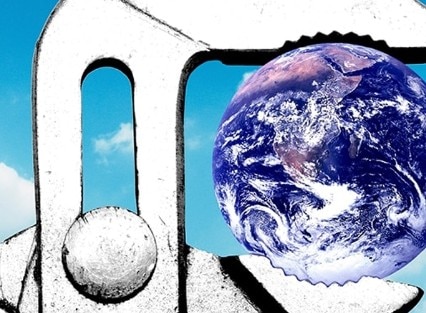China emitted 25% of the world’s carbon in 2020, India emitted 7%, making them the number one and number four emitters globally. Progress towards cleaner fuel usage in both countries will be crucial in the global effort to combat the climate crisis.
China aims to boost its primary energy mix from non-fossil fuels to above 25% in 2030 from 15.7% last year. Industry discussions suggest the contribution of natural gas could rise significantly over that time. In India, the government is targeting a rise from 6% last year to 15% by 2030.
Industrial production is the key gas usage category for both China and India. That is likely to remain the case as the manufacturing sectors of both countries move from coal to gas.
Both China and India get about half their natural gas supplies from local sources. The other half comes from imports, although they differ in that China gets about half of its natural gas imports from pipes whereas India relies solely on LNG terminals. China has a higher supply mix via contracts than India, which is more price sensitive. Both countries are aiming to add more LNG terminal capacity to cope with greater import volumes.
China’s coal base
As the first chart below shows, coal dominates China’s energy mix given its low price, rich domestic reserves and relatively low extraction costs.
|
PRC historical primary energy mix |
Pounds of CO2 emitted per million British thermal units (Btu) of energy for various fuels |
|
Source: Wind & NBS |
|
Given coal emits the most carbon among the various energy sources, for China’s carbon emissions to peak before 2030 and for carbon neutrality to be achieved by 2060, its primary energy mix would have to shift more towards cleaner fuels comprising renewable energies and gas. Beyond natural gas, use would likely further diversify to include gases like hydrogen, with still lower carbon emission levels.
India pollution clampdown
India’s gas infrastructure looks set to improve significantly over the coming years as approved expansion plans take hold. Some key policy moves that could further drive progress include environmental action by the so-called National Green Tribunal. Progress in this area is vital given that India tops the charts in terms of the number of its cities ranking among the most polluted globally.
|
|
|
Source: Statista |
The NGT has been taking steps to tackle pollution levels in industrial areas. Following the ban on the use of coal gasifiers in Morbi, Gujarat in March 2019 and the accompanying surge in natural gas, the NGT came down hard on pollution control boards later that year for inadequate steps taken to tackle pollution in 100 industrial clusters.
For more information on this subject, please see China and India Gas Utilities - Gas Gains Big From CN/IN Emissions Targets
Citi Global Insights (CGI) is Citi’s premier non-independent thought leadership curation. It is not investment research; however, it may contain thematic content previously expressed in an Independent Research report. For the full CGI disclosure, click here.



